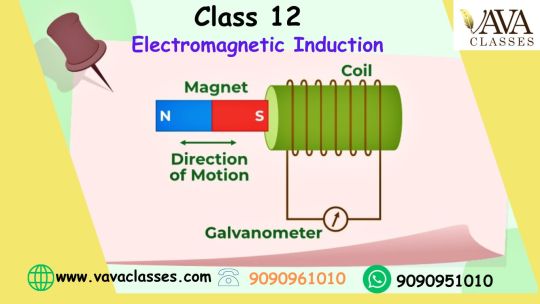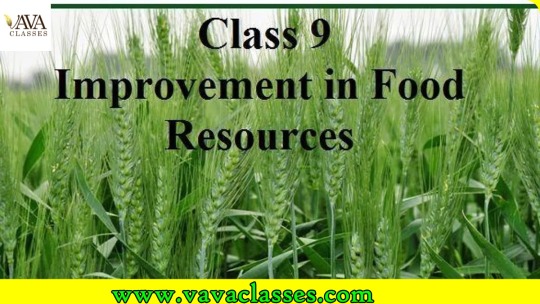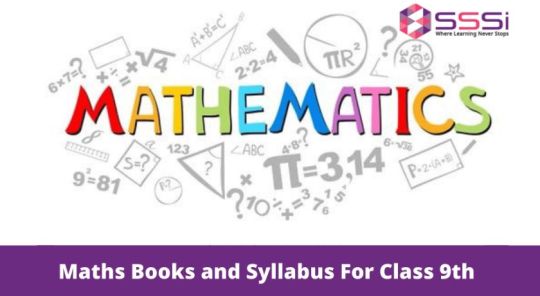#class 9 tuition classes
Explore tagged Tumblr posts
Text

read the full article exclusively only at https://www.doubtout.in/ncert-solutions-for-class-9-civics-chapter-4-working-of-institutions-updated-pattern/
#latest#ncert#education#trending news#classes#class 8 online classes#educate yourself#educate yourselves#class 9 tuition classes#educators
3 notes
·
View notes
Text
EVOS TRAINING SOLUTIONS (Building Brain for Future India)
we are a tuition coaching center. our customers are class 1 to 10 students. we mainly focus on math and science subjects.
Join our class 9 tuition classes tuition center and embark on a journey of knowledge and success. We're here to guide you towards your brighter future. We focus on establishing concepts & helping the child gain confidence in the subject.
#tuition classes#kids coding classes#class 1 to 5 tuition classes#class 8 tuition classes#class 9 tuition classes#science classes#maths classes
0 notes
Text
Electromagnetic Induction Class 12 NCERT Notes
Electromagnetic induction is a fundamental principle in physics discovered by Michael Faraday in the early 19th century. It describes the phenomenon where a changing magnetic field induces an electric current in a conductor. This process is essential in many applications, including power generation, transformers, electric motors, and generators.

The key components of electromagnetic induction are:
1. Magnetic Field: A magnetic field is produced by a magnet or a current-carrying conductor. It is represented by lines of force that indicate the direction and strength of the field.
2. Conductor: A conductor is a material through which electric current can flow easily. It could be a wire made of copper, aluminum, or any other conductive material.
3. Relative Motion: There must be relative motion between the magnetic field and the conductor. This motion could be caused by the movement of the conductor through a stationary magnetic field or by changing the strength of the magnetic field around a stationary conductor.
When there is a change in the magnetic field (either through motion or variation in intensity), it induces an electromotive force (EMF) or voltage across the conductor according to Faraday's law of electromagnetic induction. This induced voltage causes an electric current to flow if the conductor forms a closed loop.
The magnitude of the induced voltage depends on several factors, including the rate of change of the magnetic field, the number of turns in the conductor (if it's a coil), and the material properties of the conductor.
Faraday's law of electromagnetic induction class 12
Faraday's law of electromagnetic induction, a fundamental principle in electromagnetism, is typically covered in physics curricula around the world, including in class 12 studies. This law, discovered by Michael Faraday in the 19th century, describes the relationship between a changing magnetic field and the induced electromotive force (EMF) or voltage in a conductor. Here's a simplified explanation suitable for a class 12 level:
Faraday's law states that the magnitude of the induced electromotive force (EMF) in a circuit is directly proportional to the rate of change of magnetic flux through the circuit. It can be mathematically expressed as:
EMF = - ΔΦ/ Δt
Where:
EMF is the induced electromotive force (in volts).
ΔΦ is the change in magnetic flux (in webers).
Δt is the change in time (in seconds).
Key concepts related to Faraday's law include:
1. Magnetic Flux (Φ): Magnetic flux is a measure of the quantity of magnetic field lines passing through a given area. It is calculated as the product of the magnetic field strength (B) and the area (A) perpendicular to the magnetic field:
Φ = B⋅A
2. Change in Magnetic Flux: According to Faraday's law, an induced EMF is produced in a circuit when there is a change in magnetic flux through the circuit. This change can occur due to either a change in the magnetic field strength, the area of the circuit exposed to the field, or the angle between the magnetic field and the circuit.
3. Lenz's Law: Lenz's law, a consequence of Faraday's law, states that the direction of the induced current (and hence the induced EMF) is such that it opposes the change in magnetic flux that produced it. In other words, the induced current creates a magnetic field that opposes the original change in flux.
Applications and demonstrations of Faraday's law and electromagnetic induction are often covered in class 12 physics courses, including examples such as transformers, generators, and electromagnetic devices like induction cooktops and wireless chargers. Understanding Faraday's law is crucial for comprehending many principles of electromagnetism and its practical applications in various technologies.
Class 12 Physics Applications of Electromagnetic Induction
Electromagnetic induction has a wide range of applications across various fields. Some of the most common applications include:
1. Electric Power Generation: Electromagnetic induction is the principle behind the operation of power plants. Generators utilize rotating coils within magnetic fields to convert mechanical energy into electrical energy. This process is the foundation of most electricity generation methods, including hydroelectric, thermal, and nuclear power plants.
2. Transformers: Transformers rely on electromagnetic induction to change the voltage levels of alternating current (AC) electricity. By varying the number of coils in the primary and secondary windings, transformers can step up or step down voltage levels efficiently, facilitating transmission and distribution of electricity across long distances.
3. Induction Cooking: Induction cooktops use electromagnetic induction to directly heat pots and pans. An alternating current is passed through a coil beneath the cooking surface, generating a magnetic field. When ferromagnetic cookware is placed on the surface, the magnetic field induces eddy currents within the cookware, producing heat and cooking the food.
4. Wireless Charging: Electromagnetic induction is employed in wireless charging systems for devices such as smartphones, electric toothbrushes, and electric vehicles. Charging pads or mats contain coils that generate magnetic fields. When a compatible device with a corresponding coil is placed on the pad, electromagnetic induction transfers energy wirelessly, charging the device's battery.
5. Metal Detection: Metal detectors utilize electromagnetic induction to detect the presence of metallic objects buried underground or hidden within other materials. When a metal object enters the detector's electromagnetic field, it induces eddy currents in the metal, causing a change in the field that can be detected by the device.
6. Eddy Current Braking: Electromagnetic induction is employed in eddy current braking systems, commonly used in trains, roller coasters, and industrial machinery. When a conductive material, such as a metal disc or rail, moves through a magnetic field, eddy currents are induced, creating resistance and slowing down the object's motion.
7. Eddy Current Testing: This non-destructive testing method uses electromagnetic induction to detect defects, cracks, or irregularities in conductive materials. By inducing eddy currents in the material and analyzing changes in the resulting magnetic field, flaws can be identified without damaging the material.
8. Magnetic Levitation (Maglev) Trains: Maglev trains use electromagnetic induction to levitate and propel the train along the track. Electromagnets along the track generate a magnetic field, which interacts with magnets on the underside of the train, causing it to float above the track and move forward without friction.
Conclusion:
The study of Electromagnetic Induction in Class 12 Physics offers a profound understanding of Michael Faraday's groundbreaking discovery and its practical applications. Throughout this chapter, students delve into Faraday's law and its mathematical formulation, exploring how a changing magnetic field induces an electromotive force in a conductor. By grasping concepts such as magnetic flux, Lenz's law, and the factors influencing induced EMF, learners gain insight into the operation of transformers, generators, and various electromagnetic devices. Class 12 students emerge from this chapter equipped with the knowledge to comprehend and appreciate the role of electromagnetic induction in numerous technological advancements, laying a strong foundation for further exploration in the realm of electromagnetism.
#class 12#science#physics#chemistry#class 8 online classes#class 8 tuition classes#class 9 tuition classes#class 9#class 10#class 11#organic chemistry#mathematics#maths#biology#vavaclasses
0 notes
Text
EVOS TRAINING SOLUTIONS - Building Brain for Future India
we are a tuition coaching center. our customers are class 1 to 10 students. we mainly focus on maths classes and science classes subjects.
Join our tuition center and embark on a journey of knowledge and success. We're here to guide you towards your brighter future. We focus on establishing concepts & helping the child gain confidence in the subject.
#tuition classes#kids coding classes#class 1 to 5 tuition classes#class 8 tuition classes#class 9 tuition classes#science classes#maths classes
0 notes
Text
EVOS TRAINING SOLUTIONS - Building Brain for Future India
we are a tuition coaching center. our customers are class 1 to 10 students. we mainly focus on class 9 tuition classes math and science subjects.
Join our tuition center and embark on a journey of knowledge and success. We're here to guide you towards your brighter future. We focus on establishing concepts & helping the child gain confidence in the subject.
#tuition classes#kids coding classes#class 1 to 5 tuition classes#class 8 tuition classes#class 9 tuition classes#science classes#maths classes
0 notes
Text
EVOS TRAINING SOLUTIONS - Building Brain for Future India
we are a tuition coaching center. our customers are class 1 to 10 students. we mainly focus on class 8 tuition classes math and science subjects.
Join our tuition center and embark on a journey of knowledge and success. We're here to guide you towards your brighter future. We focus on establishing concepts & helping the child gain confidence in the subject.
#tuition classes#kids coding classes#class 1 to 5 tuition classes#class 8 tuition classes#class 9 tuition classes#science classes#maths classes
0 notes
Text
EVOS TRAINING SOLUTIONS - Building Brain for Future India
we are a tuition coaching center. our customers are class 1 to 10 students. we mainly focus on class 1 to 5 tuition classes math and science subjects.
Join our tuition center and embark on a journey of knowledge and success. We're here to guide you towards your brighter future. We focus on establishing concepts & helping the child gain confidence in the subject.
#tuition classes#kids coding classes#class 1 to 5 tuition classes#class 8 tuition classes#class 9 tuition classes#science classes#maths classes
0 notes
Text
EVOS TRAINING SOLUTIONS - Building Brain for Future India
we are a tuition coaching center. our customers are class 1 to 10 students. we mainly focus on math and science subjects.
Join our tuition center tuition classes and embark on a journey of knowledge and success. We're here to guide you towards your brighter future. We focus on establishing kids coding classes concepts & helping the child gain confidence in the subject.
#tuition classes#kids coding classes#class 1 to 5 tuition classes#class 8 tuition classes#class 9 tuition classes#science classes#maths classes
0 notes
Text
EVOS TRAINING SOLUTIONS - Building Brain for Future India
we are a tuition coaching center. our customers are class 1 to 10 students. we mainly focus on maths classes and science classes subjects.
Join our tuition center and embark on a journey of knowledge and success. We're here to guide you towards your brighter future. We focus on establishing concepts & helping the child gain confidence in the subject.
#tuition classes#kids coding classes#class 1 to 5 tuition classes#class 8 tuition classes#class 9 tuition classes#science classes#maths classes
0 notes
Text
EVOS TRAINING SOLUTIONS - Building Brain for Future India
we are a tuition coaching center. our customers are class 1 to 10 students. we mainly focus on class 9 tuition classes math and science subjects.
Join our tuition center and embark on a journey of knowledge and success. We're here to guide you towards your brighter future. We focus on establishing concepts & helping the child gain confidence in the subject.
#tuition classes#kids coding classes#class 1 to 5 tuition classes#class 8 tuition classes#class 9 tuition classes#science classes#maths classes
0 notes
Text
EVOS TRAINING SOLUTIONS - Building Brain for Future India
we are a tuition coaching center. our customers are class 1 to 10 students. we mainly focus on class 8 tuition classes math and science subjects.
Join our tuition center and embark on a journey of knowledge and success. We're here to guide you towards your brighter future. We focus on establishing concepts & helping the child gain confidence in the subject.
#tuition classes#kids coding classes#class 1 to 5 tuition classes#class 8 tuition classes#class 9 tuition classes#science classes#maths classes
0 notes
Text
NCERT Solutions for Class 9 Maths Chapter 2 Polynomials is the second chapter of Class 9 Maths. Polynomials are introduced and discussed in detail here. The chapter discusses Polynomials and their applications. The chapter’s introduction includes whole numbers, integers, and rational numbers.
#latest#education#ncert#trending news#classes#class 8 online classes#educate yourself#educate yourselves#educators#class 9 tuition classes#latest updates#ncertsolutions#students#higher education
1 note
·
View note
Text
EVOS TRAINING SOLUTIONS - Building Brain for Future India
we are a tuition coaching center. our customers are class 1 to 10 students. we mainly focus on class 1 to 5 tuition classes math and science subjects.
Join our tuition center and embark on a journey of knowledge and success. We're here to guide you towards your brighter future. We focus on establishing concepts & helping the child gain confidence in the subject.
#tuition classes#kids coding classes#class 1 to 5 tuition classes#class 8 tuition classes#class 9 tuition classes#science classes#maths classes
0 notes
Text
Improvement in Food Resources Class 9 NCERT Notes
Introduction to Improvement in Food Resources Class 9:
In the pursuit of ensuring global food security and sustainability, mankind has witnessed significant advancements in agricultural practices and food production techniques. The improvement in food resources encompasses a spectrum of strategies, ranging from modern farming methods to innovative technologies. These endeavours aim to enhance crop yields, minimize environmental impact, and ensure a steady supply of nutritious food for a growing population. As we delve into the realm of Class 9 studies, understanding these key facets of agricultural progress becomes crucial to appreciate the complex interplay between human ingenuity and the earth's resources in the quest for a more secure and sustainable food future.

1. Agricultural Practices:
Adoption of modern agricultural techniques, such as the use of high-yielding varieties (HYVs) of crops, has significantly increased food production.
Irrigation methods, like drip irrigation and sprinkler systems, have been employed to ensure efficient water usage in agriculture.
Organic farming and sustainable agricultural practices aim to minimize environmental impact while maintaining food production.
2. Crop Rotation:
Crop rotation helps in maintaining soil fertility and prevents the depletion of essential nutrients.
Farmers alternate the types of crops planted in a particular field over different seasons to avoid soil exhaustion.
3. Multiple Cropping:
Multiple cropping involves growing two or more crops in the same field during a single year to maximize productivity.
This practice helps in utilizing the available resources effectively and diversifying the sources of food.
4. Use of Fertilizers:
Chemical fertilizers and organic manures are used to enhance soil fertility and improve crop yield.
However, the judicious use of fertilizers is crucial to prevent soil degradation and environmental pollution.
5. Pest Control:
Integrated Pest Management (IPM) involves a combination of biological, chemical, and cultural methods to control pests and diseases.
This approach reduces the reliance on chemical pesticides, promoting sustainable and eco-friendly farming practices.
6. Animal Husbandry:
Improved breeds of livestock, like high-yielding dairy cows and meat-producing breeds, contribute to increased food production.
Scientific breeding practices and better animal healthcare enhance the quality and quantity of animal products.
7. Aquaculture:
The cultivation of fish and other aquatic organisms in controlled environments, such as ponds and tanks, helps meet the growing demand for protein-rich food.
8. Food Processing:
Food processing technologies, such as canning, freezing, and drying, help in preserving and extending the shelf life of food products.
This facilitates better storage, transportation, and distribution of food resources.
9. Storage and Distribution:
Improved storage facilities, like warehouses and cold storage, prevent food wastage by reducing post-harvest losses.
Efficient transportation networks ensure the timely delivery of food products to various markets.
10. Biotechnology in Agriculture:
Genetic engineering and biotechnology play a role in developing genetically modified (GM) crops with enhanced resistance to pests and diseases.
Biotechnological advancements contribute to the development of crops with improved nutritional content.
Improvement in Food Resources class 9 Important Questions and Answers
Here are some important questions and answers related to the improvement in food resources for Class 9:
Q1: What are the key modern agricultural practices contributing to the improvement in food resources?
A1: Modern agricultural practices include the use of high-yielding crop varieties, efficient irrigation methods, and sustainable farming techniques. These practices aim to increase food production while minimizing environmental impact.
Q2: How does crop rotation contribute to the improvement of food resources?
A2: Crop rotation involves growing different crops in a particular field over successive seasons. This helps in maintaining soil fertility, preventing nutrient depletion, and reducing the risk of pests and diseases associated with monoculture.
Q3: Explain the concept of multiple cropping and its significance in agriculture.
A3: Multiple cropping involves growing two or more crops in the same field during a single year. It optimizes the use of resources, increases agricultural productivity, and provides a diversified source of food. Farmers can cultivate different crops in the same field based on their respective growing seasons.
Q4: How do fertilizers contribute to the improvement of food resources, and what precautions should be taken in their use?
A4: Fertilizers enhance soil fertility by providing essential nutrients to crops. However, excessive use can lead to soil degradation and environmental pollution. Farmers must follow recommended dosage guidelines, and sustainable practices such as organic farming should also be considered.
Q5: Explain the importance of integrated pest management (IPM) in agriculture.
A5: Integrated Pest Management (IPM) is a holistic approach that combines biological, chemical, and cultural methods to control pests and diseases. It minimizes the reliance on chemical pesticides, promotes sustainable farming, and helps maintain ecological balance in agricultural ecosystems.
Q6: How does animal husbandry contribute to the improvement of food resources?
A6: Animal husbandry involves the scientific breeding and management of livestock. Improved breeds, proper healthcare, and efficient breeding practices enhance the quality and quantity of animal products, such as milk and meat, contributing to overall food resources.
Q7: Discuss the role of aquaculture in meeting the demand for food resources.
A7: Aquaculture involves the cultivation of fish and other aquatic organisms in controlled environments. It provides a sustainable source of protein-rich food, helping meet the growing demand for seafood.
Q8: Describe the significance of food processing in the context of improving food resources.
A8: Food processing involves various techniques such as canning, freezing, and drying, which help in preserving and extending the shelf life of food products. This facilitates better storage, transportation, and distribution of food resources, reducing post-harvest losses.
Q9: How do improved storage and distribution facilities contribute to the reduction of food wastage?
A9: Improved storage facilities, such as warehouses and cold storage, prevent food spoilage and wastage by reducing post-harvest losses. Efficient transportation networks ensure timely delivery of food products to various markets, minimizing losses during transit.
Q10: Discuss the role of biotechnology in agriculture and its impact on food resources.
A10: Biotechnology in agriculture involves genetic engineering and the development of genetically modified (GM) crops. These crops often exhibit enhanced resistance to pests and diseases, improved nutritional content, and increased yield, contributing to improved food resources.
The exploration of improvement in food resources reveals a dynamic tapestry of agricultural innovations and sustainable practices. From the adoption of high-yielding crop varieties to the meticulous application of integrated pest management, humanity strives to strike a balance between increased food production and environmental responsibility. The significance of multiple cropping, the judicious use of fertilizers, and the careful integration of biotechnology underscore the importance of holistic approaches in farming. As we navigate the complexities of food production and distribution, it becomes evident that the synergy between scientific advancements and traditional wisdom holds the key to ensuring a resilient and nourished global population. Class 9 students, armed with this knowledge, are poised to appreciate the intricate relationship between human endeavours and the bounty of nature, fostering a responsible and sustainable approach towards food resources.
0 notes
Text
EVOS TRAINING SOLUTIONS - Building Brain for Future India
we are a tuition coaching center. our customers are class 1 to 10 students. we mainly focus on math and science subjects.
Join our tuition center tuition classes and embark on a journey of knowledge and success. We're here to guide you towards your brighter future. We focus on establishing kids coding classes concepts & helping the child gain confidence in the subject.
#tuition classes#kids coding classes#class 1 to 5 tuition classes#class 8 tuition classes#class 9 tuition classes#science classes#maths classes
0 notes
Text

Best Reference Maths Books and Syllabus For Class 9th Students in India
CBSE Class 10 is a pivotal year in a student's life. It has an impact on their future job and academic pursuits. However, a student's success is not just determined by their achievement during that academic year.
Read for more info :- https://www.linkedin.com/pulse/best-reference-maths-books-syllabus-class-9th-students-kashyap-a5lyc/
3 notes
·
View notes